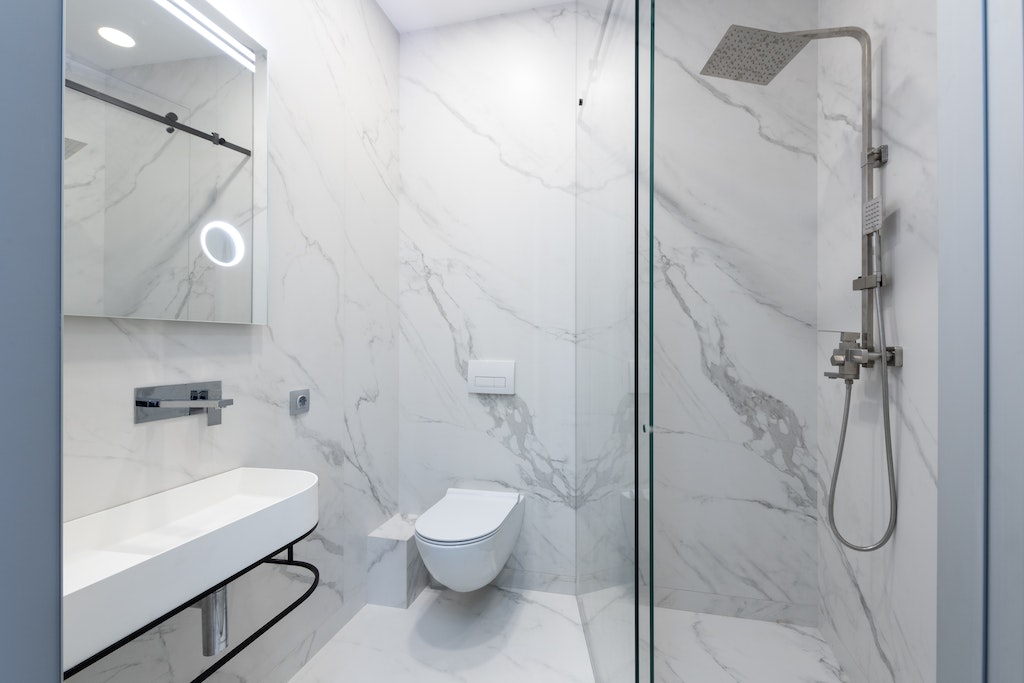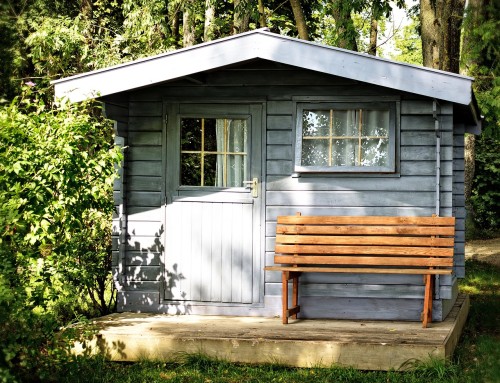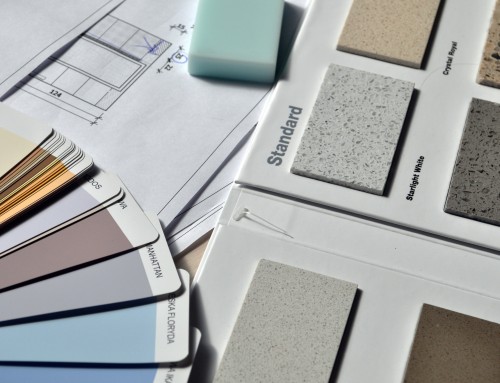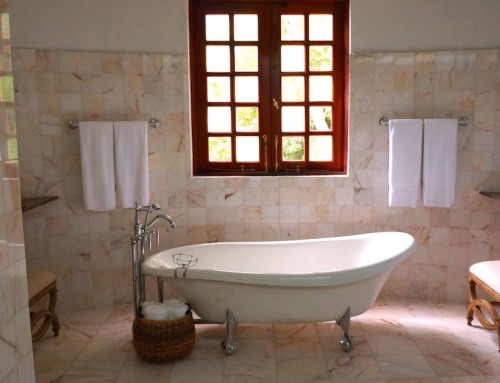Bathrooms are one of the most frequently remodeled rooms in the home. The primary bathroom is second only to the kitchen in value. As part of your bathroom remodeling process, you may consider whether to do anything with the toilet. Due to the weight of saving energy and being environmentally friendly, looking into installing water-conserving toilets is a smart move. Following, we will discuss why energy-efficient toilets are helpful to have on your list.
The Savings
Let’s start with the bottom line. Energy-efficient toilets are also known as energy-saving, water-conserving, or high-efficiency toilets. No matter what the name, these toilets can save money on your water bill. Research shows that an average family from Venice to Palm Harbor, Tampa, and beyond could save up to $110 on the water just by switching up your commode. This is possible because energy-saving toilets reduce water usage by 20-60%. That is a whopping 15,000 to 20,000 gallons for a family of four!
Traditional Toilets vs. Energy-Efficient Toilets
The difference between what we’re used to with traditional toilets and what’s new lies in the way the toilets are designed to remove waste.
Traditional toilets
It is possible that the toilet that is presently in your bathroom uses flush water volume to remove waste matter. These traditional systems can be found in the older homes throughout St. Petersburg and across to The Villages. The siphoning system of standard flush toilets employs water as the power source. As a result, the maximum amount of water available in the tank is used with every flush. The toilet finishes flushing when air enters the siphon. This means that even though only a small amount of water is required, the maximum amount of water is always going to be used.
High-efficiency toilets
Conversely, energy-saving toilets operate on water velocity to remove waste rather than water volume in traditional toilets. Water-saving bowls are contoured for a more vertical design. This shape is necessary to increase the downward velocity. In fact, you may even notice less swirl in the bowl of your new energy-efficient toilet.
Facts and Legislation
According to the Environmental Protection Agency, the greatest percentage of indoor household water use is from flushing the toilet. To save water and, therefore, money, replacing your regular toilet with a high-efficiency commode is a strong move.
EPAct of 1992
In 1992, Congress passed the Energy Policy Act, which set national water efficiency standards for toilets, faucets, and showerheads. Older toilets could use up to an amazing 7 gallons per flush (gpf). Since this legislation went into effect, new toilets sold may not exceed 1.6 gallons per flush. What’s more, advances in water-saving technology have reduced gallons per flush down to 1.28 gallons or less. Energy-efficient toilets do not disappoint and, indeed, provide superior performance. In essence, gone are the days when flushing twice was necessary.
$100 rebate
The Southwest Florida Water Management District partners with local governments to provide high-efficiency toilet rebate programs. Replacing your traditional toilet with a water-conserving model is encouraged by programs offering up to a $100 rebate. The savings are available to homeowners even south in Sarasota and Venice.
How to Choose an Energy-Efficient Toilet
So, you have made a choice to be environmentally friendly while saving your family money. You are ready to choose a high-efficiency toilet. Accordingly, looking for a WaterSense-rated toilet is the first place to start.
WaterSense
WaterSense is a voluntary partnership program with the Environmental Protection Agency. Across the country, utilities, retailers, manufacturers, and builders, among others, promote water-saving products to consumers.
To earn the WaterSense label, a toilet must pass a standard test using at least 20% less water than the current federal standard maximum of 1.6 gallons per flush (gpf). That means a WaterSense-certified water-saving toilet uses 1.28 gpf or less. Not only this, but a WaterSense-certified toilet must also have a chemical-resistant flush valve flapper or seal to prevent leaks over time.
Types of Energy-Efficient Toilets
- Dual flush –Reducing up to 67% of water consumption compared to a conventional toilet, dual-flush toilets are a popular water-conserving choice. They offer either a lever on the side or a push button system on top of the tank that allows the user to make a choice. Push one button for flushing liquid waste, which uses only 0.8 gallons of water. The other flush choice uses 1.6 gallons per flush for solid waste. In the event that you are retrofitting your toilet in an older home, be aware that a dual flush may not be compatible with older plumbing. However, because this energy-efficient toilet uses less water, extra care must be taken to keep the bowl clean.
- Power flush – A power-flush toilet creates additional force when flushed by using pressurized air in the tank. On the negative side, this toilet system usually makes more noise. You may not want to place this type of toilet near bedrooms. On the other hand, a power-flush toilet is energy-efficient at 1.1 to 1.2 gallons per flush.
- One flush – There are toilets that, with one flush, use between 1.3 to 1.6 gpf. Check to make sure you see the WaterSense certification.
The other toilets
- Low flow –Be aware that low flow, low flush, and ultra-low-flow toilets do not always mean energy efficiency. They may not be rated by the EPA. Likewise, they often use more water and are less efficient. In this case, be sure to look for the WaterSense certification labeling.
- Waterless or Dry-sanitation – This is more commonly known as a composting toilet. Although this is not a choice for most Floridians in residential areas, it is a water-conserving option because it does not use water. Waterless systems work well in off-the-grid spaces and mobile residences.
Installation of Energy-Efficient Toilets
Working with a licensed contractor or plumber will alleviate many concerns when it comes to the installation of plumbing and related fixtures. What’s more, their work will be guaranteed. Proper installation is particularly important for energy-efficient toilets.
Notwithstanding, here are some things to be aware of:
- Most importantly, follow the manufacturer’s instructions to the letter.
- An energy-saving toilet is more likely to clog if your drain lines are cast-iron vs. PVC.
- To be sure the new high-efficiency toilet will cover the existing area, check the dimensions of the space in which the toilet is to be installed.
- Another key point is to make sure not to flush non-flushable items such as paper towels and most wipes down a water-saving toilet.
In Conclusion
To summarize, remodeling your bathroom by installing an energy-efficient toilet is the single most impactful water-saving change you can make. They are high performance, good for the environment, and easy on your purse. Not only will your water consumption costs be lower, but you may even qualify for a rebate. When shopping for your new energy-efficient toilet, be sure to look for the WaterSense label.
Choosing a Professional
As with any remodeling project, consulting or hiring a professional can save headaches, mistakes, and money. West Shore Construction has been remodeling homes in the Southwest Florida area for over 30 years. Bathrooms, kitchens, and in fact whole homes have been remodeled from north of Clearwater, down to Sarasota, and across Tampa Bay to The Villages. We work with the finest tradesmen in the industry to guarantee quality workmanship and outstanding customer service.
Call us today at (727) 488-8182 for a consultation on your bathroom remodel. Our experts can help you choose and install not only your energy-efficient toilet but assist with all aspects of your home improvement. View our website to view our other services. Feel free to send us a message online a professional will connect with you right away.







